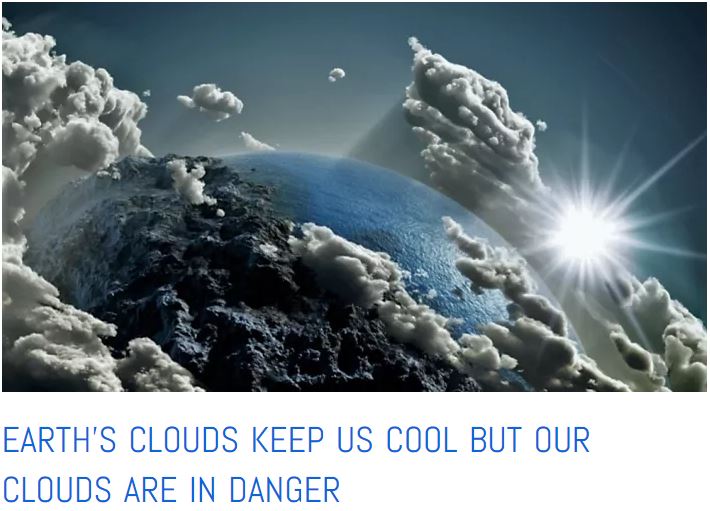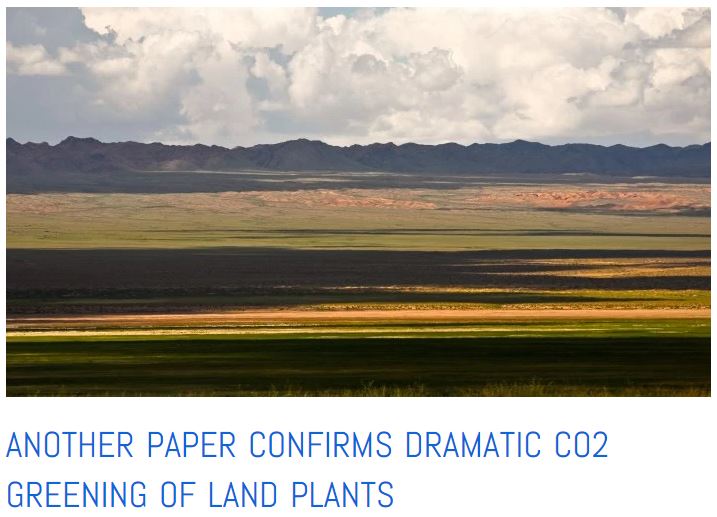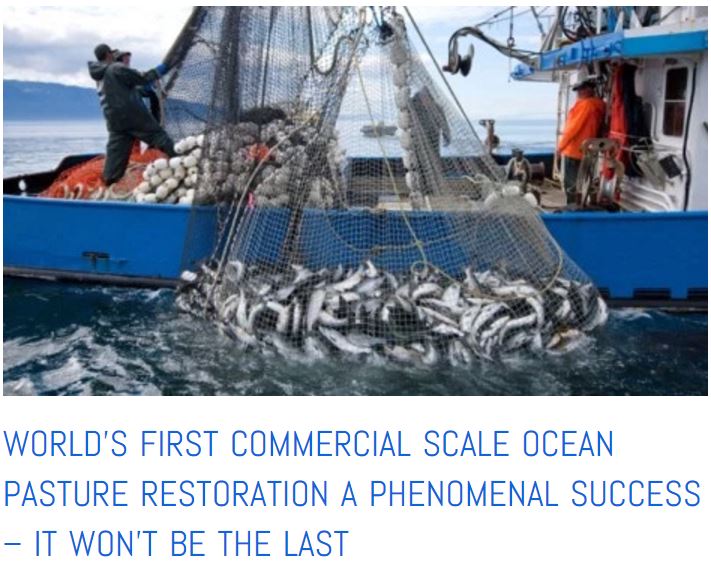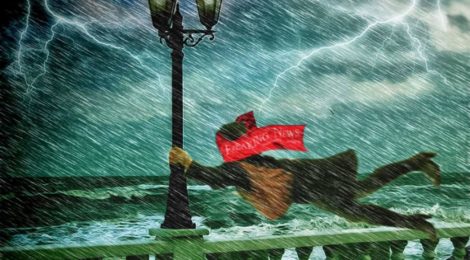
Plankton Pastures Regulate Hurricane Frequency and Intensity
New Paper In The Journal Science Says Hurricanes Unexpectedly Diminished
Hurricane intensity and frequency is down due to the reduction of aerosols happening globally, by far the greatest loss of aerosols is due to collapse of natural aerosol production from rapidly dwindling ocean pastures
A hurricane requires two seemingly conflicting conditions to form – tiny specks and aerosols to nucleate cloud formation and warm ocean waters to provide energy to the gathering storm clouds.
Ocean pasture plankton blooms are fast becoming clear, lifeless blue deserts we can and must restore them.
Through more than a decade of research, scientists have been observing and using computer simulation modeling to understand how steady global warming might have a powerful influence on a hurricane. As expected the mighty storms have become generally more intense as the Earth continues to heat up. But a mystery has emerged in that the expected growth in numbers of hurricanes including those made more powerful by ‘global warming/climate change’ hasn’t conformed to the predicted trends, despite the clear temperature rise over the past century.
As was first suggested in a 2006 study focused on the Atlantic Ocean basin, the reason for the lacking performance of the officially endorsed models could be the competing influence of aerosols.
Plankton pasture aerosols control hurricanes
A hurricane needs two factors to form and intensify. First, they need storm clouds to form and second that growing storm needs warm ocean waters to feed it energy.
Clouds on this blue planet are primarily formed around tiny nucleating seeds which condense water from the air, these seeds are both gases and tiny specks collectively described as aerosols.
It is well established that at the heart of almost every raindrop lies a tiny speck of plankton.
That plankton, phytoplankton to be exact, is the grass of vast ocean pastures. When as is normal they are lush and growing in abundance they produce organic gases that one can readily smell when crossing into a plankton bloom. In fact, ocean blooms produce 10 times the amount of aerosols as the industrial fossil fueled activities of humanity.
A friend and ocean science professor and chief scientist on a historic expedition, IronEx I, once described to me his encounter of nearly 30 years ago with the smell of an ocean pasture in bloom and it’s plant aerosols.
‘We’d added the iron in our experiment to that patch in the distant South Pacific hundreds of miles west of the Galapagos Islands and we’d sailed well away from the patch. Upon returning to the patch early one morning, just before dawn, I awoke in my bunk on the research ship. I could smell something unusual and I followed my nose out to the deck at the back of the boat to see what might be happening.
There on the back of the boat half the scientific crew had gathered with noses in the air wondering what could that smell be. As the sun came up and shone down on the ocean it was green not blue, and it suddenly came to me what that smell was. It was the smell of fresh mown hay!
Overnight we had sailed from the surrounding clear blue lifeless ocean waters into a luxurious green, the phytoplankton hay of a now lush green thriving ocean pasture.’
Beautiful Models That Don’t Make Sense
The Science authors describe how their models work with greenhouse gases like carbon dioxide that trap increasing amounts of heat, the bulk of that heat is absorbed by the oceans, and so the ocean warms faster than the atmosphere. That means that as the world warms, the potential intensity of any hurricane should increase. And because potential intensity seems to track with actual hurricane intensities, this suggests “that the strongest future storms will exceed the strength of any in the past,” the study authors wrote.
The models seem to conform to the fact that the Earth has already seen a temperature rise of nearly 2°F (1°C) since the beginning of the 20th century. Based on that amount of warming, both theory and climate models suggest that the trend in increasing hurricane intensity should already be apparent, if fairly small. But no such trend has been reliably detected on a global scale.
Cinderella Left Behind
While Science boffins greenhouse gas global warming concept is the prevailing politically correct ‘climate change science’ it is simply backwards and doesn’t put the right foot forward. This brings to light a very important crisis in this world which is a combination of yesterday’s CO2 (historic) emissions, today’s high levels of CO2 in the atmosphere and the worsening effects we are seeing, and the compounding consequences of tomorrow’s CO2 humanity will certainly be further burdening Nature with.
Yesterday’s CO2, perhaps a trillion tons of it, has already resulted in widespread global greening which has curtailed the amount of vital natural soil that blows as dust in the wind to distant ocean pastures. It is within those ocean pastures where ocean plants, the phytoplankton, grow in water and depend on vital minerals come mostly from that dust in the wind. Today because our high CO2 is producing global greening – more grass growing means less dust blowing – and ocean pastures almost everywhere are turning into today’s lifeless clear blue deserts.
While curtailing the amount of tomorrow’s CO2 we add to the already lethal overdose of CO2 in our air and oceans is certainly called for such actions will do nothing in the way of acting as an effective antidote or treatment for yesterday’s deadly dose already in the air on its way to harm the oceans.
As was first suggested in a 2006 study focused on the Atlantic Ocean basin, the reason for the lacking performance of the officially endorsed models could be the competing influence of aerosols.
And as it turns out according to this new paper and many corroborating papers, aerosols seem to have a big impact on limiting hurricane potential intensity and frequency as well as their effect in dampening global surface temperatures. The authors in this paper postulate this is likely because they act on a different wavelength of light than greenhouse gases, but they note the exact reasons are unclear, study author Adam Sobel, director of Columbia University’s Initiative on Extreme Weather and Climate, said.
Effectively, aerosols could be influencing warming, and masking the small uptick in intensity we otherwise would expect to see by now in the data.
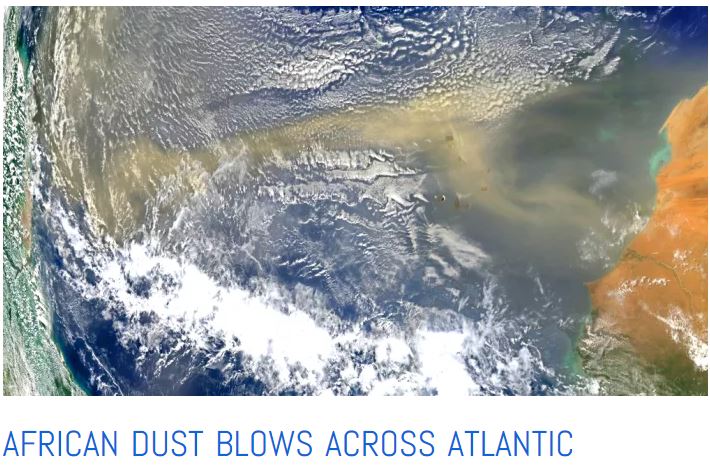
The Atlantic downwind of the Sahara is the last remaining ocean basin with healthy ocean pastures – click to read more
The one ocean basin where indisputable evidence of an increase in intensity has been found is in the Atlantic, where relatively normal amounts of ocean plankton growth has been preserved as a result of it being downwind of the dustiest region on Earth, North Africa and the Sahara and Sahel.
Ocean pasture aerosols drive global plankton cooling!
This paper seems to focus on one peculiar point of view regarding aerosols and climate and in fact the less likely point of view. Indeed aerosols control climate on this blue planet but the major source of aerosols are in fact tightly tied to ocean phytoplankton. The oceans provide the lion’s share of aerosol gases and specks and indeed at the heart of nearly every bit of cloud and raindrop lies a tiny speck of plankton.
The authors quite rightly note that in the one ocean basin where ocean plankton is not in cataclysmic collapse but rather is strong and healthy and even growing is the Atlantic hurricane alley downwind of the dusty Sahara. Saharan dust nurtures and sustains rich Atlantic plankton blooms so in that region ocean plankton cooling remains in a historic status quo. However, over most of the rest of the 72% of this blue planet that is ocean there is well documented cataclysmic collapse of ocean phytoplankton and the mystery of the missing hurricanes.
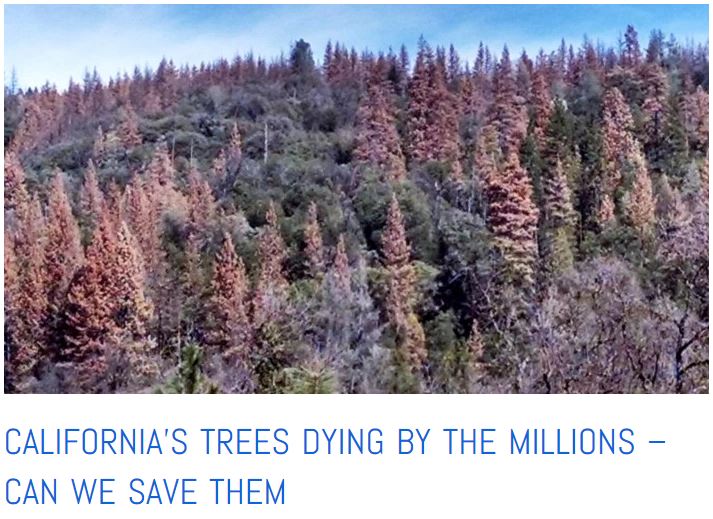
Droughts on land can likely be lessened by restoring ocean pastures and their rainmaking plankton – click to read more
The long disappearing ocean plants of those regions had been performing their vital role as the most powerful force of nature on our blue planet by providing powerful plankton cooling. Now dramatically curtailed production of prodigious aerosols and specks, which serve as to nucleate cooling clouds and rain, is banishing the clouds and rain from the skies. While this is indeed resulting in dramatic ocean warming as is widely reported that extra ocean energy has not overcome the lack of storm clouds that energy could strengthen into hurricanes and typhoons.
The collapse of plankton cooling of the oceans directly results in ocean warming and that ocean warming is the major factor in global warming and climate change. It’s vital to understand that this is the path and not the politically popular reverse where climate change and global warming result in ocean warming.
When we understand the true root cause of climate change as being the biological health of the ocean pastures we can immediately see the path to offer the antidote and effective treatment for this deadly global malaise. Indeed our knowledge and understanding of ocean plant life and how we have been destroying it by keeping its vital dust in the wind from arriving to sustain ocean pastures shows us the way to bring the oceans back to health and abundance and in doing so return control of this blue planet’s climate back to Nature who has invested billions of years of evolution into its biological climate control ecosystem.
The cost of following the climate modelers and engineers to solutions to climate change results in astronomical technological costs that the recent Paris Climate Change Accord say must be at least $3.5 trillion dollars per year and even so, such effort will take scores of years to implement before any change might be observed.
On the other hand, working with Mother Nature to restore her ocean pastures is akin to organic gardening. We have denied the ocean dust so we must simply return to her the dust we have taken away. The cost of doing this is so incredibly inexpensive, literally dirt cheap, and to restore all of the world’s ocean pastures to the state of health and abundance they and the rest of us on Earth enjoyed will cost mere millions of dollars each year, a few ‘millionths’ of the cost of the techno-fixes.
Best of all by restoring ocean pastures to the former condition of health and abundance, we will bring back the fish. IT JUST WORKS!
Join me to help restore ocean pastures in all of this blue world’s seven sea!









